Skip over navigation
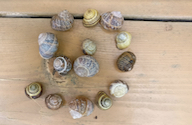
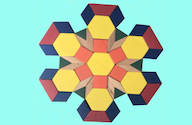
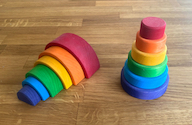
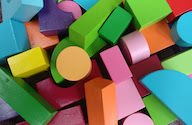
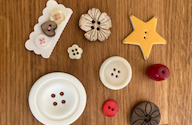
Or search by topic
Number and algebra
Geometry and measure
Probability and statistics
Working mathematically
Advanced mathematics
For younger learners
Making Footprints
Age 3 to 5
Exploring 3D shapes





Children often enjoy making footprints in soft materials.
Adults could use this idea to encourage children to develop an awareness of the faces of 3D shapes.
The Activity
Provide children with soft dough and a selection of small wooden blocks of various shapes. Talk about experiences of making footprints in sand or snow. Encourage children to select a block and press it into the dough to make a 'footprint'. Show how to run a finger around the edge of the impression to feel the perimeter.
Provide children with soft dough and a selection of small wooden blocks of various shapes. Talk about experiences of making footprints in sand or snow. Encourage children to select a block and press it into the dough to make a 'footprint'. Show how to run a finger around the edge of the impression to feel the perimeter.
Encouraging mathematical thinking and reasoning:
Describing
Tell me about what you've made.
Can you see other blocks that might make the same footprint?
Look at the block and the footprint it has made side by side. What's the same and what's different?
Tell me about what you've made.
Can you see other blocks that might make the same footprint?
Look at the block and the footprint it has made side by side. What's the same and what's different?
Reasoning
What will happen if we stand the shape back in its footprint?
How do you think this shape made this footprint?
What will happen if we stand the shape back in its footprint?
How do you think this shape made this footprint?
Opening Out
What will happen if we turn the shape over and make a new footprint?
How many different footprints do you think you can you make with this shape?
Which shapes might have made this footprint?
What will happen if we turn the shape over and make a new footprint?
How many different footprints do you think you can you make with this shape?
Which shapes might have made this footprint?
Recording
Draw around a block. Look at the shape you have made.
Is it the same shape as the footprint?
Draw around a block. Look at the shape you have made.
Is it the same shape as the footprint?
The Mathematical Journey
Properties of shapes:
- using everyday language to describe the shape of each block and the impressions it makes, e.g. flat, sharp, slopey, pointy, like a brick, ball, box, roof, etc.
- using mathematical language to talk about the attributes of each block and the impressions it makes, e.g. curve, side, corner, flat, rectangular
- connecting the shape of a face of the block to the shape of the impression made by it
Same and different:
- developing language to describe similarities and differences e.g. bigger, smaller, longer, shorter, like a ..., same as ..., straighter, more curved, rounder, more pointy
Development and Variation
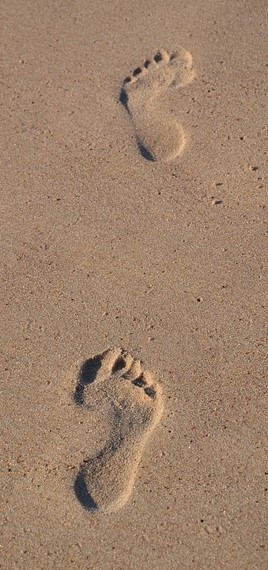 Children could:
Children could:
Story, rhyme and song links
The Blue Balloon by Mick Inkpen
Changes by Anthony Browne
The Six Blind Men and the Elephant by Clare Boucher and Rachel Merriman
Jack and Jill (good for slopes and rolling)
 Children could:
Children could:
- Print with cut vegetables and paint.
- Solve old-fashioned picture cube puzzles.
- Investigate shadow play.
- Press natural materials such as pebbles, twigs, cones and flowers into soft earth.
- Make handprints in salt dough that can be baked to keep.
- Dip feet in baby talc to make prints on black paper.
- Balloon print - dip a partially-blown balloon into paint to print.
- Play with shape sorter toys in which blocks are fitted into shaped slots.
- Use cutters to make gingerbread or pastry shapes.
Story, rhyme and song links
The Blue Balloon by Mick Inkpen
Changes by Anthony Browne
The Six Blind Men and the Elephant by Clare Boucher and Rachel Merriman
Jack and Jill (good for slopes and rolling)
Resources
Optional: Encourage children to explore making 'footprints' using everyday objects such as hands and feet, spoons of different sizes, dice, lolly sticks, leaves, shells, small world play equipment or pieces of other construction kits.
- Soft dough
- Selection of wooden blocks of various shapes
- Rolling pin to 're-flatten' the dough
- Camera or video camera for recording results
Optional: Encourage children to explore making 'footprints' using everyday objects such as hands and feet, spoons of different sizes, dice, lolly sticks, leaves, shells, small world play equipment or pieces of other construction kits.
Download a PDF of this resource.


